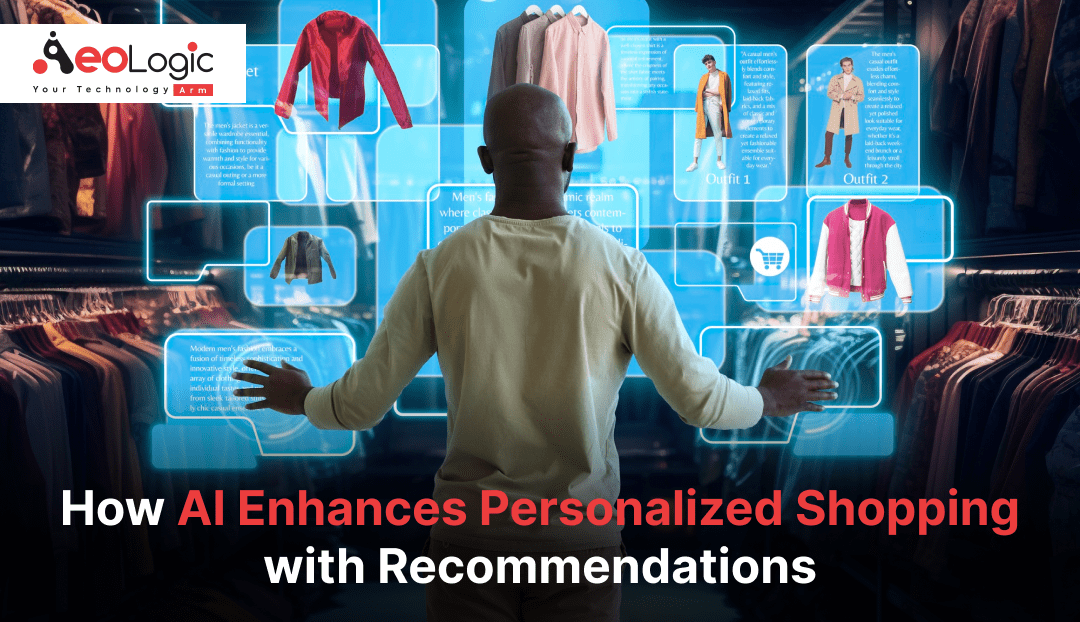In the digital age, the landscape of retail has undergone a significant transformation. One of the most profound changes has been the shift toward personalized shopping experiences, driven largely by advancements in artificial intelligence (AI). AI’s ability to analyze vast amounts of data and predict consumer preferences has revolutionized how retailers interact with customers. At the heart of this transformation are AI-driven recommendation systems, which have become integral to creating a tailored shopping journey. Here’s a closer look at how AI enhances personalized shopping through recommendations.
Also read: The Role of AI in Revolutionizing Fitness App Development
The Evolution of How AI Enhances Personalized Shopping
Traditionally, shopping experiences were largely static, with limited customization. Consumers were often presented with a broad range of products with little regard for individual preferences or past behavior. However, as online shopping grew in popularity, so did the need for a more personalized approach. Retailers and e-commerce platforms began to seek ways to make shopping experiences more relevant and engaging for each customer.
Enter AI. With its ability to process and analyze large datasets, AI has become a game-changer in the realm of personalized shopping. By leveraging machine learning algorithms, retailers can now deliver recommendations that are not only relevant but also predictive of what customers might want or need next.
Key Technologies Driving AI Innovations in Retail
Artificial intelligence (AI) is transforming the retail sector by enhancing customer interactions, optimizing operations, and fueling business growth. Several core technologies underpin these advancements:
Data Analytics
Data analytics plays a crucial role in harnessing the power of information to improve retail strategies. This technology involves gathering, processing, and analyzing vast amounts of both structured and unstructured data from various sources, including sales transactions, customer interactions, social media, and website traffic.
Data is collected from diverse touchpoints such as point-of-sale (POS) systems, e-commerce platforms, customer relationship management (CRM) systems, and loyalty programs, as well as external data sources. The initial step involves cleaning, transforming, and standardizing this raw data to ensure its reliability and accuracy. Advanced analytical techniques are then employed to identify trends, patterns, correlations, and anomalies.
Machine Learning
Machine learning empowers systems to learn from data and make autonomous decisions or predictions by detecting patterns and relationships without explicit programming. This technology involves training algorithms on historical data, which includes various features and target variables.
Natural Language Processing (NLP)
Natural Language Processing (NLP) enables computers to comprehend, interpret, and generate human language. NLP algorithms analyze text data to extract meaning, sentiment, and key insights.
In retail, NLP is used to analyze customer feedback and social media conversations, helping retailers understand trends, preferences, and areas needing improvement. For example, sentiment analysis can track discussions about products and services, allowing businesses to respond to customer feedback promptly.
The Mechanics of AI-Driven Recommendations
AI-powered recommendation systems primarily rely on two key methodologies: collaborative filtering and content-based filtering. Both techniques are used to predict and suggest products that a consumer might be interested in, but they operate in different ways.
- Collaborative Filtering
Collaborative filtering is based on the idea that users who have similar preferences in the past will continue to have similar preferences in the future. This method operates in two primary ways:
-
- User-Based Collaborative Filtering: This approach finds users with similar tastes and preferences and recommends products that these similar users have liked. For instance, if User A and User B have similar purchasing patterns, the system might recommend products that User B has bought to User A.
- Item-Based Collaborative Filtering: Instead of focusing on users, this method looks at the similarity between items. For example, if a customer has purchased a particular book, the system might recommend other books that were frequently bought together with that book by other users.
- Content-Based Filtering
Content-based filtering recommends products based on the attributes of items and a user’s past behavior. This method analyzes the characteristics of products and matches them with the user’s preferences. For instance, if a customer frequently purchases sports equipment, the system will recommend similar items based on the categories and features of the products previously bought.
- Hybrid Approaches
Many modern recommendation systems use hybrid approaches that combine both collaborative and content-based filtering. This integration helps overcome the limitations of each method, providing more accurate and diverse recommendations.
AI Enhances Personalized Shopping Experience
AI-driven recommendation systems significantly enhance the shopping experience in several ways:
- Improved Relevance
One of the most notable benefits of AI recommendations is the improved relevance of suggestions. By analyzing a customer’s browsing history, purchase patterns, and even social media activity, AI can present products that align with their specific interests and preferences. This relevance not only boosts customer satisfaction but also increases the likelihood of a purchase.
- Increased Discovery
Personalized recommendations help customers discover new products that they might not have found otherwise. For example, an AI system might suggest emerging brands or niche products that align with a user’s taste, thereby expanding their shopping horizons and enhancing the overall shopping experience.
- Enhanced Customer Engagement
AI-driven recommendations can make shopping more engaging by offering a dynamic and interactive experience. Personalized suggestions keep customers interested and encourage them to explore more products, leading to longer time spent on the platform and increased interaction with the retailer.
- Efficient Shopping
For many consumers, especially those with busy lifestyles, shopping can be time-consuming. AI recommendations streamline the shopping process by curating a list of relevant products, reducing the need for extensive searches and helping users find what they need quickly and efficiently.
Also read: How AI and Automation are Elevating Hotel Management and Operations
Conclusion
AI enhances personalized shopping. It has undeniably transformed the way we shop by making experiences more personalized, relevant, and engaging. Through sophisticated recommendation systems, retailers can offer tailored suggestions that enhance the shopping journey, making it more efficient and enjoyable for consumers. As technology continues to advance, the potential for even more innovative and personalized shopping experiences is on the horizon. By embracing AI-driven recommendations, retailers can stay ahead of the curve and provide their customers with an exceptional shopping experience that meets their unique needs and preferences.







